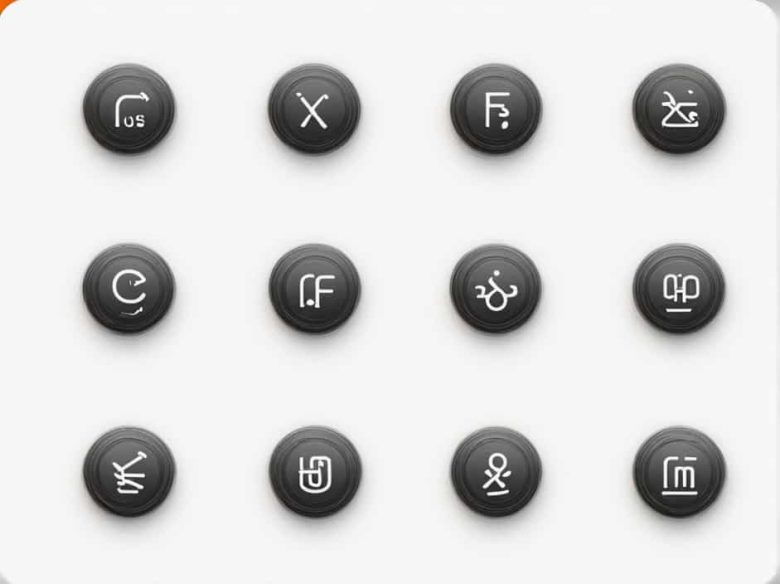Tellurium (Te) is a chemical element with atomic number 52 and belongs to group 16 of the periodic table also known as the chalcogens. It exhibits both metallic and non-metallic properties making it a metalloid.
Understanding the electron configuration of tellurium is essential in chemistry as it explains the element’s reactivity bonding behavior and position in the periodic table. This topic will provide a detailed breakdown of tellurium’s electron configuration its significance and how it relates to its chemical and physical properties.
What Is Electron Configuration?
Electron configuration describes the arrangement of electrons in an atom’s orbitals. Electrons are distributed among different energy levels (shells) sublevels (subshells) and orbitals according to three fundamental principles:
- Aufbau Principle – Electrons fill orbitals from lowest to highest energy.
- Pauli Exclusion Principle – Each orbital can hold a maximum of two electrons with opposite spins.
- Hund’s Rule – Electrons occupy orbitals singly before pairing up.
Now let’s explore the complete electron configuration of tellurium and what it reveals about this element.
Complete Electron Configuration of Tellurium
The electron configuration of tellurium is:
1s² 2s² 2p⁶ 3s² 3p⁶ 3d¹⁰ 4s² 4p⁶ 4d¹⁰ 5s² 5p⁴
Breaking Down the Electron Configuration
- 1s² → The first energy level (K-shell) holds two electrons in the 1s orbital.
- 2s² 2p⁶ → The second energy level (L-shell) has two electrons in the 2s orbital and six electrons in the 2p orbitals.
- 3s² 3p⁶ 3d¹⁰ → The third energy level (M-shell) is completely filled with 18 electrons.
- 4s² 4p⁶ 4d¹⁰ → The fourth energy level (N-shell) is also completely filled with 18 electrons.
- 5s² 5p⁴ → The outermost energy level (O-shell) contains six electrons (two in 5s and four in 5p).
Since tellurium has six valence electrons in the 5s and 5p orbitals it exhibits chemical behavior similar to oxygen sulfur and selenium.
Noble Gas Notation of Tellurium
A shorter way to write the electron configuration of tellurium is by using the noble gas notation:
[Kr] 4d¹⁰ 5s² 5p⁴
Here [Kr] (krypton) represents the electron configuration of krypton (1s² 2s² 2p⁶ 3s² 3p⁶ 3d¹⁰ 4s² 4p⁶) which simplifies the notation.
Valence Electrons of Tellurium
Tellurium has six valence electrons in the 5s and 5p orbitals:
- 5s² (two electrons)
- 5p⁴ (four electrons)
These valence electrons determine tellurium’s chemical properties oxidation states and reactivity.
Tellurium’s Position in the Periodic Table
- Atomic Number: 52
- Group: 16 (Chalcogens)
- Period: 5
- Block: p-block
Since tellurium is in group 16 it shares similarities with oxygen sulfur selenium and polonium but it has more metallic properties compared to lighter chalcogens.
Chemical Properties of Tellurium
1. Common Oxidation States
Tellurium typically exhibits the following oxidation states:
- -2 (acts like a non-metal)
- +2 +4 +6 (acts like a metal in compounds)
2. Reactivity
- Reacts with oxygen to form tellurium dioxide (TeO₂).
- Forms hydrogen telluride (H₂Te) when combined with hydrogen.
- Bonds with metals to create tellurides (e.g. Cu₂Te Ag₂Te).
Physical Properties of Tellurium
| Property | Value |
|---|---|
| Atomic Mass | 127.6 u |
| Density | 6.24 g/cm³ |
| Melting Point | 449.5°C (841.1°F) |
| Boiling Point | 988°C (1810°F) |
| Electronegativity | 2.1 (Pauling scale) |
| Crystal Structure | Hexagonal |
Tellurium is a brittle silvery-white metalloid with properties between metals and non-metals.
Uses of Tellurium
Tellurium has various applications in electronics alloys and chemical industries.
1. Semiconductor Industry
- Used in solar panels and thermoelectric devices.
- Essential in cadmium telluride (CdTe) solar cells.
2. Metal Alloys
- Improves the machinability of steel and copper.
- Strengthens lead-acid batteries.
3. Glass and Ceramics
- Enhances heat resistance in glass manufacturing.
- Used in pigments and coatings.
4. Chemical Applications
- Catalyst in petroleum refining.
- Used in fireworks and explosives.
Comparison of Tellurium with Other Chalcogens
| Element | Atomic Number | Valence Electrons | Metallic Character |
|---|---|---|---|
| Oxygen (O) | 8 | 6 | Least metallic |
| Sulfur (S) | 16 | 6 | Slightly metallic |
| Selenium (Se) | 34 | 6 | More metallic |
| Tellurium (Te) | 52 | 6 | Strongly metallic |
| Polonium (Po) | 84 | 6 | Most metallic |
Tellurium exhibits higher metallic character than oxygen sulfur and selenium but it is less metallic than polonium.
Tellurium (Te) has a complete electron configuration of 1s² 2s² 2p⁶ 3s² 3p⁶ 3d¹⁰ 4s² 4p⁶ 4d¹⁰ 5s² 5p⁴ with six valence electrons in its 5s and 5p orbitals. It is a metalloid that shares chemical similarities with other group 16 elements but has stronger metallic properties.
Tellurium is widely used in electronics alloys and chemical industries due to its unique semiconductor and conductive properties. Understanding its electron configuration helps explain its position in the periodic table oxidation states and chemical reactivity.



